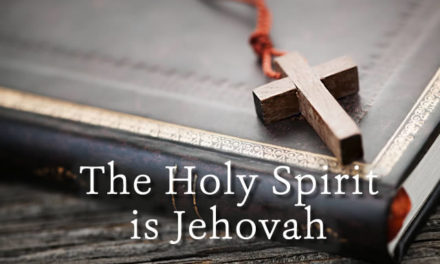Today the Witnesses would have everyone believe that Jesus died not on a cross but rather on a torture stake. They would also have everyone believe that they have always taught this doctrine. Unfortunately for the Watchtower Society – neither of these teachings are true.
Joseph Rutherford, the leader of the Watch Tower Bible and Tract Society, apparently did not know about the torture stake idea, at least not in the early years of his presidency.
So prolific was Rutherford that he averaged one book for every year that he was in office. However, one of the interesting aspects of his books is the fact that he not only discusses the death of Jesus, but he also provides artistic renditions. In none of Rutherford’s books is Jesus ever depicted on a torture stake. Rather Jesus is always pictured on the traditional Christian cross.
In the 1927 edition of his book Creation, Rutherford pictures Jesus and the two thieves being crucified. Under the picture, the caption reads “Crucifixion: The blood of Jesus, representing his life poured out, must be presented in heaven as an offering for the sins of mankind; and without that blood’s being presented as a sin-offering the people could not be sanctified” (p. 265).
The next year, Rutherford published the Harp of God. This book depicts Jesus on the cross also.
That same year, 1928, Rutherford published another book picturing Jesus and the two thieves on crosses. The caption to this picture is even more explicit. Rutherford wrote,
“Crucifixion: Jehovah makes another covenant looking to the reconciliation of man to himself. That covenant involves the greatest of all sacrifices. It involves a sacrifice on the part of Jehovah himself and a sacrifice on the part of his Son, Jesus, and even others are taken into that covenant.
“It is therefore appropriately named in the Scriptures the `covenant by sacrifice. ‘The death of Jesus Christ upon the cross put an end to the law covenant. He in no wise annulled the law covenant, but he fulfilled it. `Think not that I am come to destroy the law, or the prophets: I am not come to destroy, but to fulfil'” (Reconciliation, p. 168, emphasis mine).
Despite the fact that Rutherford depicted Jesus on the cross in several of his books, he would in 1936 begin to change his position to what would become the current Watchtower Society position – that of the torture stake theory. This theory says that Jesus did not die on a cross but rather on a single upright post, hand over hand with a single nail through both hands. In his book Riches, Rutherford wrote, “The death of the perfect man Jesus would, in any manner inflicted, meet the requirements of the law, because death was the penalty inflicted upon Adam. Why, then, was Jesus crucified? Jesus was crucified, not on a cross of wood, such as is exhibited in many images and pictures, and which images are made and exhibited by men; Jesus was crucified by nailing his body to a tree” (p. 27).
This torture stake theory, started by Rutherford, would be clarified over the next several decades. In 1972, the Watchtower wrote an article discussing Christian cross came to be accepted by professed Christians. After being led to adopt the cross as a sacred symbol, professed Christians began depicting the body of one crucified thereon.”
They continue with “No Biblical evidence even intimates that Jesus died on a cross” (Awake!, 8 November 1972, p. 28).
It is interesting that they should say that no biblical evidence “even intimates” Jesus’ death was on the cross. Remember Thomas’ demand for proof concerning the resurrection of Jesus, “Except I shall see in his hands the print of the nails” (John 20:25). Thomas, one of Jesus own disciples knew that Jesus had hung on the cross. He requested to see the print of the nails (plural). The torture stake theory only has one nail (singular). Even on this small detail, the Bible is specific.
This same Awake! article goes on to say, “The adoration of the cross is outright idolatry, disguised under the label of being Christian.” Apparently Joseph Rutherford’s books contained some idolatrous pictures!
Two years later, the Awake! magazine provided a picture of Jesus on the torture stake. However, not only is Jesus depicted as being on the torture stake, but the thief, who in all of Rutherford’s books was on a cross, is now also on a torture stake. This picture is provided in this article for comparison with that of the Rutherford depiction.
While it is true that Watchtower theology has never been biblically correct, at least in the early years of their organization they had not yet banished the cross to the role of a Pagan symbol.
The apostle Paul’s words again echo through the corridors of time. “For the preaching of the cross is to them that perish foolishness; but unto us which are saved it is the power of God” (1 Corinthians 1:18).
By David Henke






